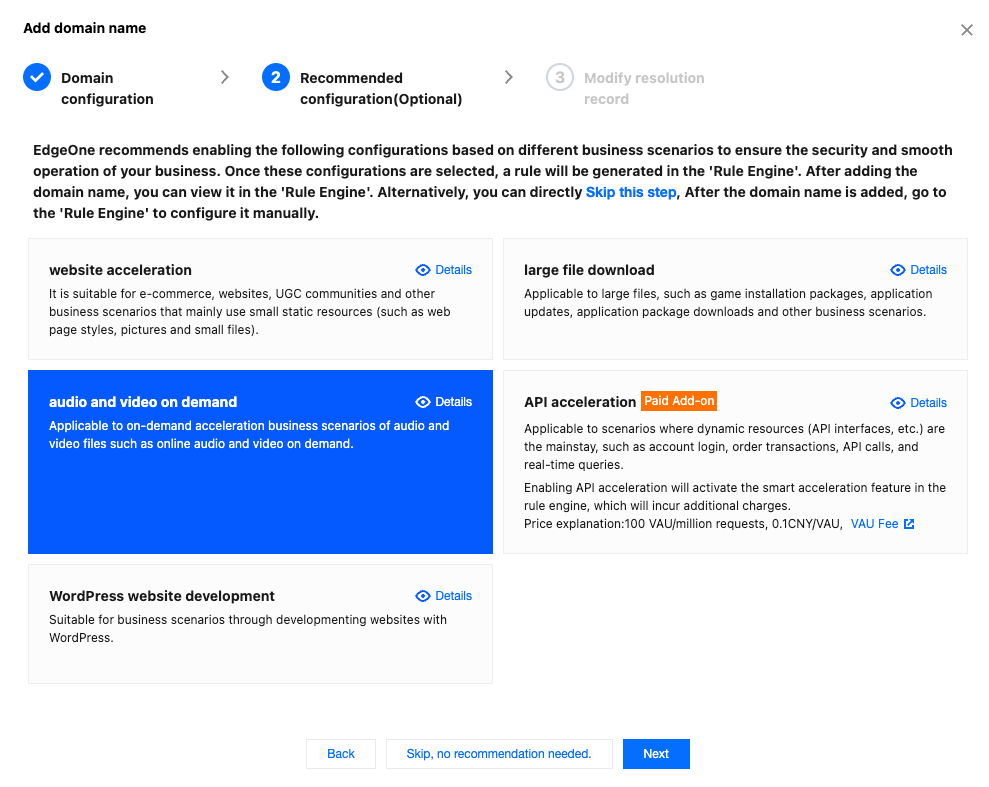Audio and Video Pre-pulling
Overview
When the network connection is unstable or the audio and video files are too large, users may encounter problems such as first-frame loading delay or playback lag. The audio and video pre-pulling feature of EdgeOne can effectively improve these problems. It automatically caches part of the audio and video data before the user clicks and plays, significantly shortening buffering time and ensuring a smooth viewing experience even under unstable network connection. Additionally, audio and video pre-pulling is the default configuration policy of EdgeOne, with optimal parameters set for audio and video scenarios. Users only need to select the corresponding recommended scenario when adding a domain name to enable the feature by default.
Feature Principle
HLS/DASH files: When the client requests an m3u8/mpd file, the edge node of EdgeOne pulls ts/m4s segments in advance to increase the speed of response to subsequent requests.
MP4/FLV files: When the client initiates a range request, by expanding the scope of the range request before the origin-pull, files are pre-cached to the edge node of EdgeOne to improve response efficiency.
Directions
If you need to enable the audio and video pre-pulling feature, you can refer to the following steps:
Note:
The current guidance on directions is only applicable to the scenario of newly created domain names. If you need to enable the audio and video pre-pulling feature for domain names already added under your account, contact your business personnel for assistance.
1. Log in to the Tencent Cloud EdgeOne console, enter Service Overview in the left menu bar, and click the site to be configured under Website Security Acceleration.
2. On the site details page, click Domain Name Service, select Add domain name, and refer to the description of domain name configuration items to complete the basic configuration of the domain name. Click the Next button.
3. In the Recommended configuration (Optional) step, click to select the audio and video on demand card, and choose to use the recommended configuration for this scenario. When audio and video files are added under this domain name, the audio and video pre-pulling operation will be triggered by default.
4. Click Next and complete other subsequent domain name configuration operations.
